NATURE INSPIRED INVENTIONS --- Clock; tick says the clock, tick tick, what you have to do, do quick.
Just for a moment, let's try an analyze life in general. You have to wake up exactly by 5:00 am, then immediately you rush into the bathroom to take your bath, you need to be real fast because you need to get to the train station before 6:30 am unless you are going to trek to work. Luckily, you reach the train station on time, you can't stop remembering that just last week, one of your co-workers was sacked for coming to work late. You really hope that the train doesn't get faulty on the road.
7:50am you are at your work place, stacked on your desk is a pile of files, you are needed to sort them out before 2pm, you need to get your son from his school. By 2:30, you are already ready at his school, and this continues till you get home by you get home by 6 pm, only for you to prepare dinne, leave the house immediately and prepare for the next it is 6:00 am the next morning.
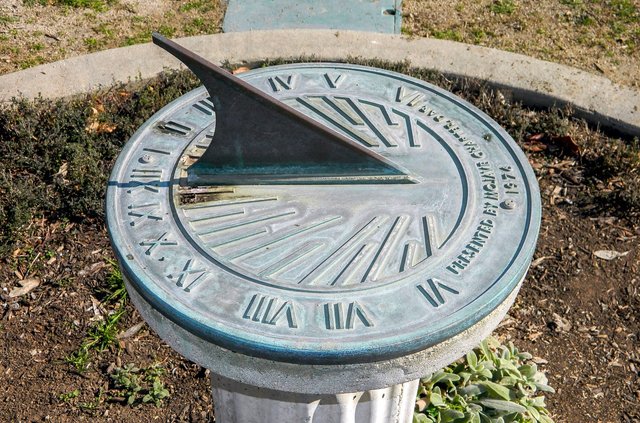
Everything man does is controlled by time. Since time waits for no man, man tries to keep up with time. If not for this amazing invention called the clock, keeping up with time would have been an impossibility. I will try to be very explanatory in this article, I will be making use of so many stories to pass the message across (I forewarn you, some of them may be untrue, find out for yourself which one is).
I will recommend you travel through the united states by exploring guides on The foodies checklist and restaurants marker to meet some of the best restaurants in different cities.
Alright, let's begin.
CLOCKS
A clock is an instrument or device whose major functions are to measure keep and indicate time. Apart from the fact that it is the oldest invention, everything in this world seems to revolve around it, making it the most important invention made by man. Before the invention of the clock, the smallest period that man could measure with a bit accuracy was a day. But thanks to this amazing invention, we can measure time which more accuracy even to its smallest units like the minute, seconds, even microseconds.
Today we have so many types of clocks, each of them displaying time in its peculiar way. Take for instance the analog clock, which we all know that it indicates time by making using of angles, but it's counterpart, the analog clock prefers to use numerical representations to tell us what time it is.
We've seen so many wonderful designs of clocks, even the one in your wrist, yes, your wrist watch (I know you wear Patek Water 😂,), even your stop watch too are examples of clock. There is one thing that is worth noting, and that's is that what we know today as clock wasn't this way it is now in the beginning, but as it advanced, it evolved to this point it is now. We know for sure that it will keep evolving as the day goes by.
The invention of the clock was not by Tonychance, instead it was as a result of a need impressed on man by nature. Before we get to how man invented the clock, let's understand the factors that impressed the need for time to man in the first place. These factors we shall be considering is the sun and the earth's movement.
THE SUN, THE EARTH AND TIME
We know that in the center of our solar system there is a star. This star which we know as the sun is a body of spherical hot plasma that has a diameter of 1.39 million kilometres. In fact, it is so massive that only it's mass makes up about 99.86% of the whole mass of the sonar system. The earth, which is our planet is at a distance of 149,597,870,700 meters away from the sun, revolving around the sun at the speed of 30km/sec while orbiting around its own axis at the speed of 0.5km/sec.
It is a general truth that the sun doesn't switch off at night and switch itself on in the morning like an electric bulb. Before the sun goes down we always observe it moving from the east to the west across the sky. But since we know that the sun is stationary, it is definitely the movement of the earth that causes this apparent movement of the sun, and also, what causes the day and the night.
A closer look at this phenomenon seems to display the important of being quick about what one does. Take for instance, it is very easy to do your duty in the day time when the sun is up, than at night. In fact, artificial light can't be as great as the sun light. Thus, man needs to be fast and finish whatever he is doing before the sun goes down.
At first, man didn't put much in this apparent movement of the sun, but when he finally did and realized that this changes in position of the sun as it moves across the sky before it sets occurs daily, man sought of a way on how to harness this movement so as to be able to predict when the sun will go down, enabling him to time himself when doing his duties. The result of studying this apparent movement is what will know today as the clock.
Let's see how man actualized this dream.
Meanwhile out this DIY article: How to Fix Car Scratches – (Everything to Know)
HISTORY OF CLOCKS
Just as stated earlier, man have always depended on the sun for his daily activities. He always knew that whatever he had to do, he had to finish it before the sun goes down, even though at that point he knew not how long it took for the sun to set. On a certain day in 1500 BC, a certain man in Egypt observed how his shadow position changes from the rising of the clock to the setting of it, as if it was moving in with a circle, two times. He observed the same thing in the shadows casted by their pyramids.
Being a mathematician, he thought to himself, why don't he draw a circle and make marks at specific points, put a stick at its center and see how the shadow of the stick will move round the circle. The result was fantastic. He observed that the shadow moved round the circle twice, and that single discovery lead to the birth of the sundial clock. This sundial wasn't used just by the Egyptians alone, the Greeks, and the Romans used it too.
But the sundial has a big limitation. Since it depends on the sun, it was only effective during the day, thus, those of that century couldn't tell time at night. I know you will be wondering what was the need to know the time at night. Well, you see, the major problem with this was that secret lovers have to wait for hours for their loves to arrive at their meeting point due to misunderstanding of time, (you know that most times every hour in the night seems the same). That very need gave an inspiration that lead to the invention of the water clock. Water clocks are just containers that contain water, which drains off a certain amount at a specific time. Thus, whenever that amount is drained off, that's an hour.
The Romans known for their "romantic naature" (if you know what I mean) realized that all they had to do was just to calibrate a water clock, using the sundial in the day. They knew that, that will surely prevent secret lovers from waiting for hours for their love. The Romans looked at their invention and said "damn! this is good." (I guess you didn't know this was how the water clock came about, am glad you just learnt from me 😂). Due to the changes in season, the water clock became a more reliable source of time than the sundial.
Picture by Maahmaah - Wikicommons CC BY-SA 3.0
Ancient Water Clock used 2500 years ago
Water clocks have their own disadvantages. It is cumbersome and can't be carried about, and you can never know the time while in the market, nor ask someone in the market what is the time. Because of that, as man began to advance in technology, he began to do more research on how to invent a more better and accurate clock. By 18th century, man have devised a more better way of telling time, and began to use it in his scientific experiments to the extent that they began to refer to it as a scientific instrument.
The breakthrough of clock appeared when man noticed that by stretching a bent string, or the movement of gears, time can be measured. A mechanical clock that is worth nothing is the pendulum clock that was invented by Galileo which he designed based on the idea he got from a lamp suspended in the Cathedral of Pisa swings back and forth in a simple harmonic motion, when he was still a student.
Yet still, none of these clocks were perfect nor even qualified to be carried along when going for a trip at sea, as it keeps messing up. Ships tend to arrive later than presumed, since the time that see in any of the already invented clocks keeps assuring them that they are way a head of time. This was very bad, as so many young men came home to find out that the girl they wanted to marry have already cancelled their wedding when she got tired of waiting for them to arrive at the set time for the wedding. Let me spare us the stories of cheating gone wrong, when husband came back at a time different from the time that he told his wife that he would be back.
John Harrison, living in England as of then, who saw how badly time was spoiling relationships, he decided to invent the marine chronometer, which measured time at high precision even at sea. He even made the clock to be able to tell the position of the ship at sea with high precision too. The Royal Navy used this marine chronometer greatly as a means of navigation. I guess that single invention saved unfaithful companions of those Royal Navy men and women from a lot of worry.
After that invention, man kept on striving for perfection and kept on striving for a more precised time (I guess he needed to be very sure about what the time is). One of the most remarkable clock makers of the 20th century that contributed to what we know today as clock is George Daniels of Britain, but all the clocks invented where mechanical. Even though those clocks were close to good, mechanical devices like springs are prone to slacking, thus, the are not yet as accurate as they appear to be.
In all these, the inaccuracy of both the definition and measurements of the 'second" was was a matter of great concern, as the second affects the minute, as well as the hour and day. All mechanical clocks saw the second as 1/86400, but due the regular earth's rotations which is where we got the idea on how to measure time is very irregular, thus, it makes that assumption very incorrect.
@lemouth wrote about this in his article Defining time with atomic fountain, where he said that with the 1940s to the 1950s, the scientists came up with the idea of using a fixed year as a reference point (referred to as the ephemeris time) to define a second. Thus, at that time, the second was defined as 1/31446925.9747 of the tropical year for 1900.
Almost all the problem of time keeping was solved with the invention of the atomic clock in 1950s by the National Physics Laboratory. But the invention of the laser changed everything. It didn't just make time precise, it also made it accurate. One good thing about the laser is that it produces pulses at very small period of few attoseconds per pulse making it very precise. Right now, we need no longer define time by the second which is just 1/86,400 (i.e a day divided by the total seconds in a day), we define it as the number of cycle it takes for a caesium 133 atom to change from its energy state to another. The number of this cycles of radiation is 9,192,631,770. This is referred to as the Caesium standard.
Though you might underestimate how important this invention is, the truth is that thanks to it, we don't hear much of lovers quarrelling over infidelity, (especially for couples that keep to time though)... Hahahah.. Don't mind me, am just joking around.
Let's just get to see how some kinds of clocks work.
WORKING PRINCIPLE OF SOME KINDS OF CLOCK
Under the kinds of clock, we generally classify clocks based on their working mechanisms. All those that use gears are the mechanical clocks, all those that use water are water clocks, e.t.c. Lets take a look at the basic working principle of a few of these clocks.
Working Principle of a Mechanical Clock
Mechanical clocks are controlled by gears and do not need electricity to function. Their are two major parts of a mechanical clock that we need to point out. They are the mainspring and the pendulum. The mainspring is just a spring which needs to be wound at intervals using a key so as to tighten it. When the mainspring is tightened, it possess a potential energy (F =ke), as this spring unwinds, it releases the energy which causes the gears to move the hand of the clock.
A pendulum consist of a string that is attached to a solid rod or a weight at its end. Now, this pendulum, once set it motion continues to dangle or swing for a very long time. It swings from left to right and the force which enables it to keep swinging is the force of gravity. Pendulum work on the principle that it takes the pendulum Bob the same amount of side to swing to the left and to the right. This time it takes for a pendulum Bob to travel through and fro is what we know as period. Thus, the job of the pendulum is to keep time and to make sure the the gears moves at the direction they are supposed to.
How a Water Clock Works
The idea of the water clock is very simple. All it uses is just how long it takes for an amount of water to flow in measuring time. We have two major types of water clock based on whether the water is flowing in (inflow water clock), or outwards (outflow water clock). The outflow water clock consist of a transparent container marked at specific points that is filled water. Each of these markings indicate an hour. As the water passes a particular mark in the container, an hour has passed. The idea of the inflow water clock is the same, is just that this time, the water flows into the clock and not outwards, thus, as the water fills, one can know how much time have been spent.
Working principle of Atomic Clock
Though it's name sounds so much like the atomic bomb, therefore I won't be surprised if you think that these kinds of clocks are radioactive. The truth is that they are not radioactive. Scientists have observed that atoms can change from a given state of energy to another state of energy (known as the target excited state of energy). All we are needed to do, is just to bombard those atoms with photons of microwave frequency, since it is not all frequency that causes this transition. Remember that the energy of photons is proportional to its frequency (E=hf, where h is the plank constant), thus, the idea is generating photons at the right frequency to enable this transition.
The number of atoms that will chang their energy state is totally dependent on the frequency of the photons bombarded into them. As this frequency of the photons that is used in bombarding this atom gets close to the inherent frequency of these atoms, the more the number of atoms that changes energy state increases. Knowing this, the main idea of the atomic clock is to tune its microwave frequency to exactly the oscillation of this atoms. We can tune into this frequency by counting the number of atoms that gets to this new energy state. Thus, if for a caesium atom, we measure this oscillations and it 9,192,631,770Hz, what it means is that one second has passed.
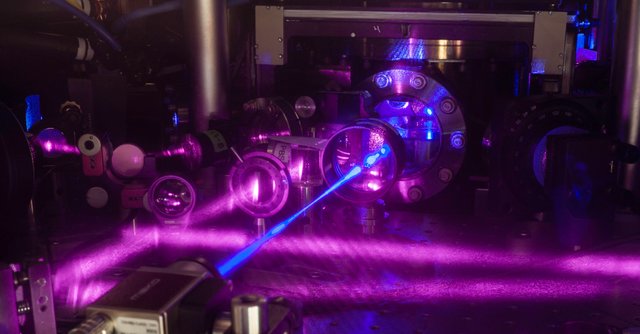
Picture by NIST - Wikicommons CC BY-SA 3.0
A Strontium atomic clock
TYPES OF CLOCKS
We have established that based on the working mechanism we have kinds of clocks like the mechanical clocks. But based on how they tell us what the time is, we have the analog clock, the digital clock, we have the electronic word clock, auditory clock, atomic clock e.t.c.
Analog Clocks
This is probably the most common type of clocks. It usually has two or three hands. The shortest one among them is the hour hand. The hour hand moves around the clock twice a day. At each hour, it stops at one of the fixed dials or number indicating the hour. The longer hand is the minute hand, which moves faster than the hour hand, such that it completes it's cycle at the end of every hour. The longest hand which is the second hand (some analog clocks do not have them) moves the fastest in a clock. Its complete cycle is equal to a minute. The sundial used in the ancient time is an analog clock.
Digital Clocks
A better clock than the digital clock, when it comes to reading of time, the digital clock is a more precise and reliable clock. It is an electronic device, and it displays it's time in LCD, LED or VFD screen. There are two major ways in which the digital clock displays it's time. It either displays it using the 24-hour notation where you get to see times like 13:00, 15:00, 18:00 e.t.c.#, or it displays it using the 12-hour notation and then differentiate night and day using AM or PM.
Electronic Word Clocks
Pay attention to its name "Word" Clock. Just as the name infers, they don't tell time, rather, it writes out natural sentences on the screen telling you what time is at that point. These sentences made by this clock can be recorded into it using a software.
Tactile Clocks
This kind of clock is designed to suit people with blindness or unclear vision. What the clock does is to produce something like a physical representation of the number of the time on its surface. This physical representation can either be text code for the blind or the normal standard numbers.
Multi Display Clocks
The most recent type of clock, this clock has the ability to show more than one time zone. Its display can either be analogue or digital, or even both in the same clock.
Auditory Clocks
In this type, you don't necessarily need to see the time, the clock tells you what the time is by itself. Some of these clocks have human voices recorded in them, thus, when it is 12:00, they tell you "the time is twelve O'clock. There are other auditory clocks that have notes recorded in them instead of voice. Some of them make notes according to the number of the hour. An example of such clocks are alarm clocks that make sounds that sound so much like the church bells.
USES OF THE CLOCK
Clocks are not only used to tell time, there are other thousand and one uses of the clock. Some of these uses are the following.
As control devices
Clocks can be used in controlling other devices such as the DVD players. Everytime you miss an event while watching a movie, you always rewind back, and whenever you feel you have seen a particular part of a movie, and you want to move on to the next, you fast forward. If not for the clock in the DVD player, you won't be able to control the back or forth of the tape to that very point of the movie you want to watch.
As Counters
For explosives that are designed to explode after a while, thus enabling the person that implanted it to get away before it explodes, those explosives have a clock installed as a counter that counts down till the the bomb explodes.
To synchronized Processing in Computers
It seems unbelievable, but it is true that computers do depend on clocks located at their internal parts. What the clock helps them to do is to synchronize their documents, programming and keep a real time of its processing. One could easily say that for a computer to run effectively, it needs a clock. Haven't you observed that immediately you switch on your phone after removing the battery, if you decide not to set your time, the phone assumes a time of its own and begins to work with it?

Picture by LudwigLindstorm - Wikicommons CC BY-3.0
Personal Computer
Timer for Scientific Experiments
In scientific field, we make use of the stop watch (which is a clock) during scientific experiments, and using the same clock, we can make intelligent deductions and predictions.
CONCLUSION
The importance of this amazing invention inspired by nature can not be over stated, as it alone gives meaning to life. How one manages his or her time gives us a clear distinction between someone who is lazying around and someone who has a vision in life. What other invention helps one to manage his time very well if not the clock?
The more man strives to make a more precised clocked, the more he get chocked up with time. The fortunate thing about it all is that we haven't even invented the most precised clock, thus, be at the look out for it. Stephen Hawking says only time we tell. Some believe this means that we are forever slaves to time. But if being slave to time will help us achieve greatness, let's be slaves forever.
REFERENCES
How does different kinds of clock work
Distance of the earth from the sun
This article is spornsored by mechanicassistant.com and the drivers checklist
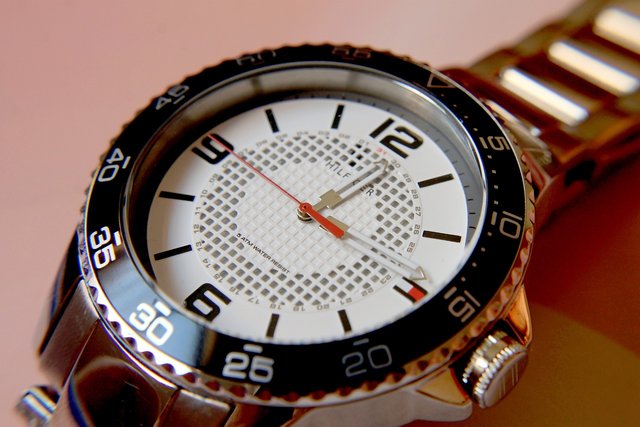


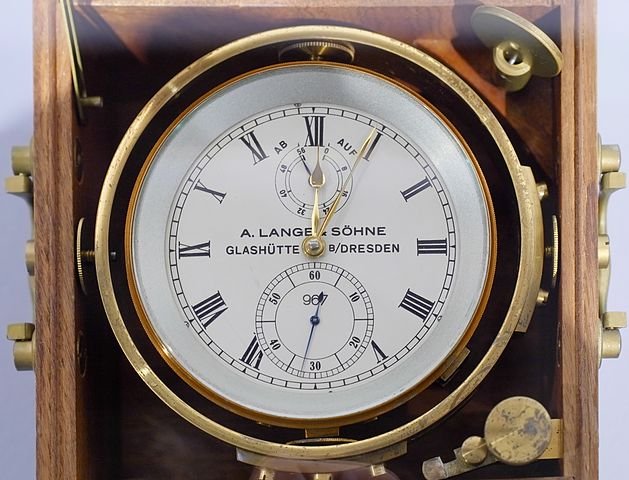

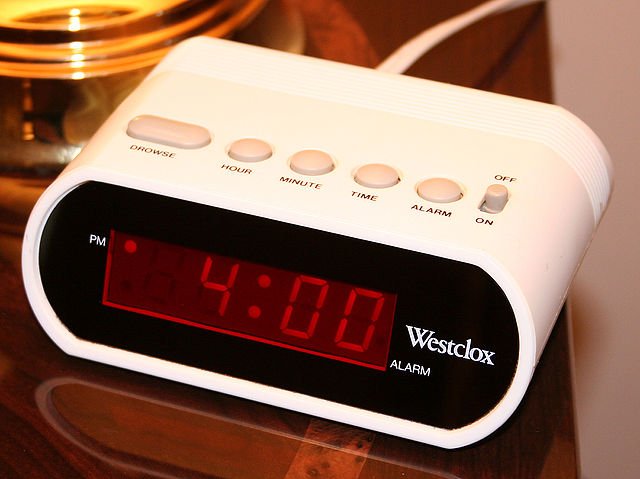

sometimes, i wish there was no clock or even no time at all coz the sight of the clock or the awareness of time sometimes cause panic but hey, what can we do about it?
another nice one!
Lol.. Me too.. Since there is nothing we can do about it, the only option left now is just to possess the time control ability of Hiro Nakamura of Heroes reborn.. It will solve this problem of time once and for all.
Thank you @rharphelle.
Well not really. One focuses on a given transition between two states. The energy of both states is in general negative... as bound states have always a negative energy. You should re-read my post a second time, I explained it there in lengthy details ;)
I have reread your post and I've made those corrections you pointed out.. Thank you so much.. @lemouth.
You are very welcome! :)
Have followed your activities here for some times and can now right say you are an encyclopedia of particle physics. I bet not many professors are as knowledgeable as you! What a being! ✌️
Thanks for the compliment. Note that all professor should know as much as I do :)
Congratulations excellent post friend good job if you can support me with a vote
This post has been upvoted for free by @microbot with 0.1%!
Get better upvotes by bidding on me.
More profits? 100% Payout! Delegate some SteemPower to @microbot: 1 SP, 5 SP, 10 SP, custom amount
You like to bet and win 20x your bid? Have a look at @gtw and this description!